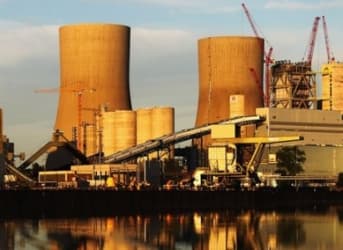The numbers that define China’s progress over the last 50 years are staggering. Over 300 million people lifted out of poverty. Over 160 cities with more than 1 million inhabitants. Over 630 million Internet users.. And now, following the recent climate change deal with U.S., China has a massive price tag of $2 trillion to implement climate policy changes. In order to cap carbon emissions and generate 20% of the country’s electricity from renewables by 2030, Bloomberg estimates this would require 1,000 nuclear reactors, 500,000 wind turbines or 50,000 solar farms. “The pledge would require China to produce either 67 times more nuclear energy than the country is forecast to have at the end of 2014, 30 times more solar or nine times more wind power. That almost equals the non-fossil fuel energy of the entire U.S. generating capacity today,” wrote Bloomberg.
With China already being the global number one in wind and solar energy, financing more projects for these in 2013 than all of Europe combined, it would seem logical for it to turn to these two sources for that massive expansion. However, much chatter from Communist officials is putting the attention squarely on nuclear. In early November, Guo Chengzhan, the deputy director of the National Nuclear Safety Administration, stated that "nuclear power is China's only scalable replacement energy and is a vital choice in China's energy strategy”, while Tsinghua University expert Teng Fei told Reuters that without nuclear, China’s peak carbon target could “be delayed by as long as a decade.”
Related: China’s Emissions Could Negate Global Efforts Against Climate Change
Nuclear power is also very likely to be firmly etched into China’s 13th Five-Year Plan (2016-2020) amid a massive drive toward clean energy. Such a commitment is the highest that the Communist Party’s Politburo can make, and while not all Five-Year Plan pledges are met, the country’s track record in wind and solar allow for confidence that it will achieve its nuclear targets as well. One distinct advantage is that such an expansion of nuclear reactors would be embraced at the local level, a key factor in getting central policies to be effective. After all, nuclear reactors would provide several of the important elements party bosses like to see: a visible, marquee infrastructure project for their area, large-scale job creation through construction and auxiliary services, and a potential reduction in long-term pollution which would help to quell unrest.
Another advantage will come from the efforts China is making to have nuclear technology be developed inside the country. In recent years, Westinghouse and Areva have both exported their sophisticated nuclear reactor technology to China, but three domestic nuclear firms are working on adapting that technology to future domestic needs. The South China Morning Post reports that China General Nuclear and China National Nuclear are collaborating on the Hualong 1 reactor model, based on Areva’s technology, while State Nuclear Power has issued a model named CAP1400, inspired by Westinghouse ideas. While these may eventually lead to sophisticated reactors, current third-generation Chinese reactors being built from Western technology in Guangdong and Zhejiang have suffered major delays.
Related: China Strengthening Claim To South China Sea Oil And Gas
But China is catching up. With Areva’s shares crashing after major financial difficulties threatened to stop it from meeting its 2015 and 2016 obligations, China is moving into the gap. The country has already inked a $6.5 billion deal to build nuclear reactors in Pakistan. In the UK, China has invested in the planned Hinkley Point nuclear plant. Since June, Chinese companies will have the right to control Chinese-designed nuclear power stations in the UK.
Time will tell to what extent China relies on nuclear to successfully meet its ambitious 2030 plans, or whether it can even do so. The next five years will be telling as China aims to bring six new nuclear plants online every year from 2015 to 2020. If it can do so while navigating numerous obstacles from a lack of domestic expertise to struggling grid capacity, then there is little doubt that nuclear will follow wind and solar as the country’s latest energy success.
By Chris Dalby of OilPrice.com
More Top Reads From Oilprice.com:
- Russia-China Deal Could Kill U.S. LNG Exports
- Are The US And China’s Climate Goals Realistic?
- The Economic And Strategic Implications Of Low Oil Prices



















I think we need to recognize all the costs associated with extracting, transporting and burning fossil fuels, the cleanliness of renewable energy, and the ability to scale nuclear. We need to shift now to clean energy and make it an industry that we measure in trillions of dollars, not billions.
Nuclear, all-in, full-cycle, is 80% labour which China has lots of, easily sourced from the cities where the power is needed. It is a safe, clean source of power and safe, clean work. The taxes on the nuclear labor will build clean modern cities.
Compare with hydrocarbons where 80% of the cost is for the dirty, polluting fuel and the work is mostly in remote and dangerous coal mines.